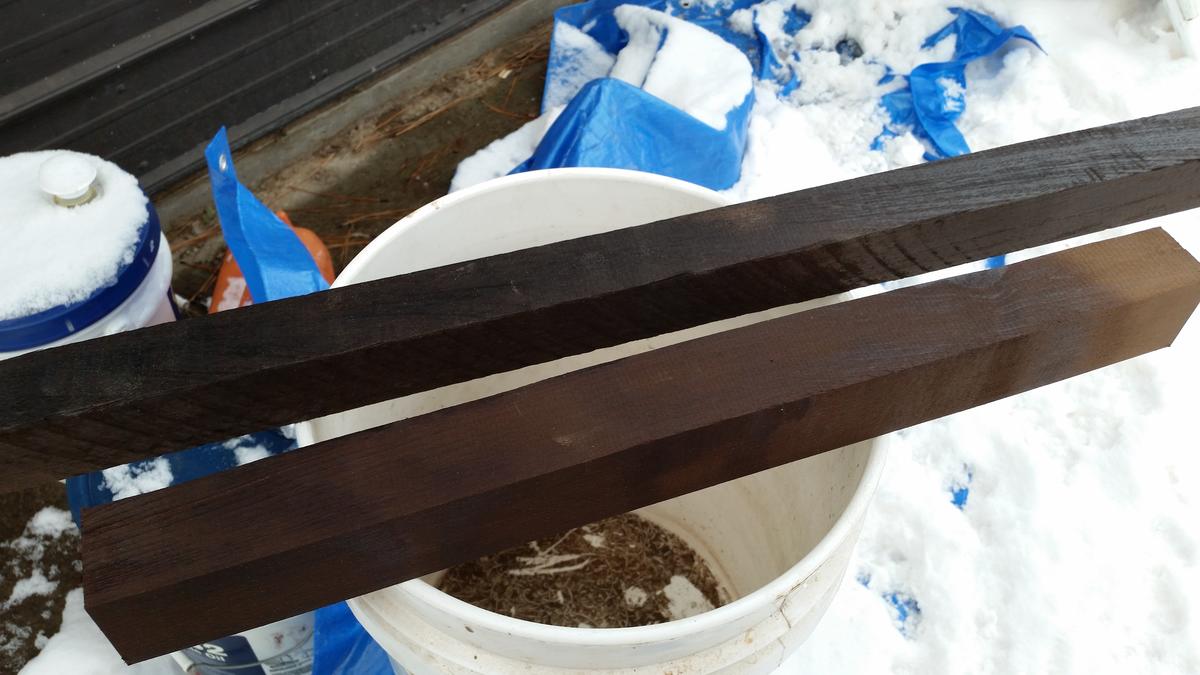NRRI Wood Scientist Matt Aro thought he finally came across a project that he just couldn't pull off.
It was that darn ipe (pronounced "ee-pay"), a tropical wood species that is very dense and durable. It kept cracking when processed in NRRI's test-scale thermal modification kiln.
Aro has spent the past four years testing Minnesota's tree species in the kiln to upgrade their durability and expand markets for their use in high value products. But this tropical ipe wasn't cooperating.
A company in Montana had asked Aro if thermal modification could alter the color of this durable wood to almost black, but without chemicals or paint. "After the first two tests, the quality of the wood was very poor with cracking," said Aro. "And we still didn't have the right color."
He started to think that ipe might be one of the rare wood species that just shouldn't be thermally modified. For Minnesota species, the kiln cooking process improved the wood quality by making it more dimensionally stable, warp-free and water-resistant.
In this case, Hot-Woods, LLC wanted to retain the wood's natural durability while gaining the dark color his wood products customers desired, explained Marty Perkins, co-owner of the business.
"We found NRRI's lab when we were looking for an experimental oven to test different materials for our markets," he said. "Our main customers are fire arms manufacturers for the gun stocks, but modified wood for musical instruments and pool cues is a growing market for us."
With encouragement from Perkins, Aro and his team kept at it until they finally figured out a unique scheduling process that produced the desired color and wood quality.
The success also encouraged Hot-Woods to acquire its own thermal modification kiln and Aro was able to advise them in the purchase.
The thermally modified wood industry is very small and “nichey” in the United States producing around 40 million board feet annually. “That’s just a blip on the radar in the wood industry, but it’s growing,” said Aro.
One of the challenges is the lack of publically available technical information about the altered material’s specifications – gaps in knowledge that NRRI is working to fill. There’s also inconsistency in messaging around thermally modified wood, making it a harder sell. Aro is working with a team from the College of Food, Agricultural and Natural Resources Sciences at the University of Minnesota to develop a strategic marketing plan targeted at the professional sector – builders, wholesalers and commercial producers.
Today, Hot-Woods is one of a handful of thermally modified wood sources in the U.S. They hope to grow from 10 employees to 15 when their new kiln arrives in the summer of 2017.
MORE ABOUT THERMALLY MODIFIED WOOD
The process of cooking wood in a low-oxygen was industrially developed in Finland in the mid-1990s. It chemically changes the structure of the cell wall (lignin, cellulose and hemicellulose) thereby increasing the wood’s durability and dimensional stability. This process allows Minnesota’s dominant wood species to be used in higher value products, like siding, flooring, windows and doors. NRRI’s test kiln allows research to be done on a small scale, to test the results of the process on many different species, as well as engineered wood products like plywood and oriented strand board.
